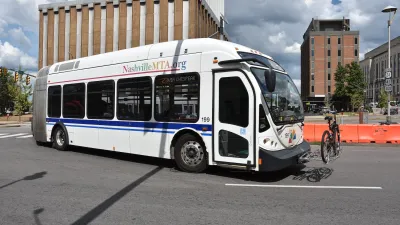Although suburbs with college campuses are often eager to zone out students, this sort of exclusionary zoning has its own negative side effects.

In Long Island where I teach, colleges and universities are engaged in a dorm-building boom—partially to attract out-of-town students, but partially because zoning rules often prevent student-oriented off-campus housing such as apartments and group houses.
The Supreme Court has upheld such zoning ordinances; in a 1974 decision upholding one Long Island suburb's right to exclude group houses, Justice Douglas wrote:
A quiet place where yards are wide, people few, and motor vehicles restricted are legitimate guidelines in a land-use project addressed to family needs...It is ample to lay out zones where family values, youth values, and the blessings of quiet seclusion and clean air make the area a sanctuary for people.
Justice Douglas's decision to use "youth values" as a reason to exclude college students seems a bit bizarre to me. Nevertheless, such restrictive zoning is understandable; I suspect that the middle-aged suburban homeowners believe that college-age students are far too likely to get drunk, drive recklessly, or have noisy parties (or worse still, do all three at the same time). Moreover, high car insurance premiums for college-age drivers suggest that this prejudice is rooted in empirical reality.
On the other hand, anti-student zoning creates its own problems. If students don't have any place to live near a college, they have to commute to the college. And in the automobile-dependent suburbs of Long Island, this usually means lots of driving. So ironically, a zoning strategy designed to create places where (in Justice Douglas's words) "motor vehicles [are] restricted" in fact may create traffic jams and pollution near universities.
As noted above, on-campus housing may well solve this problem, by allowing students to get to school without driving. This strategy may work well in the long run, especially if students do not bring cars to the dormitories with them. However, a municipality cannot always rely on a university's willingness to build dormitories, since dorm construction requires time and money.

Alabama: Trump Terminates Settlements for Black Communities Harmed By Raw Sewage
Trump deemed the landmark civil rights agreement “illegal DEI and environmental justice policy.”

Planetizen Federal Action Tracker
A weekly monitor of how Trump’s orders and actions are impacting planners and planning in America.

The 120 Year Old Tiny Home Villages That Sheltered San Francisco’s Earthquake Refugees
More than a century ago, San Francisco mobilized to house thousands of residents displaced by the 1906 earthquake. Could their strategy offer a model for the present?

Congestion Pricing Drops Holland Tunnel Delays by 65 Percent
New York City’s contentious tolling program has yielded improved traffic and roughly $100 million in revenue for the MTA.

In Both Crashes and Crime, Public Transportation is Far Safer than Driving
Contrary to popular assumptions, public transportation has far lower crash and crime rates than automobile travel. For safer communities, improve and encourage transit travel.

Report: Zoning Reforms Should Complement Nashville’s Ambitious Transit Plan
Without reform, restrictive zoning codes will limit the impact of the city’s planned transit expansion and could exclude some of the residents who depend on transit the most.
Urban Design for Planners 1: Software Tools
This six-course series explores essential urban design concepts using open source software and equips planners with the tools they need to participate fully in the urban design process.
Planning for Universal Design
Learn the tools for implementing Universal Design in planning regulations.
Clanton & Associates, Inc.
Jessamine County Fiscal Court
Institute for Housing and Urban Development Studies (IHS)
City of Grandview
Harvard GSD Executive Education
Toledo-Lucas County Plan Commissions
Salt Lake City
NYU Wagner Graduate School of Public Service






























